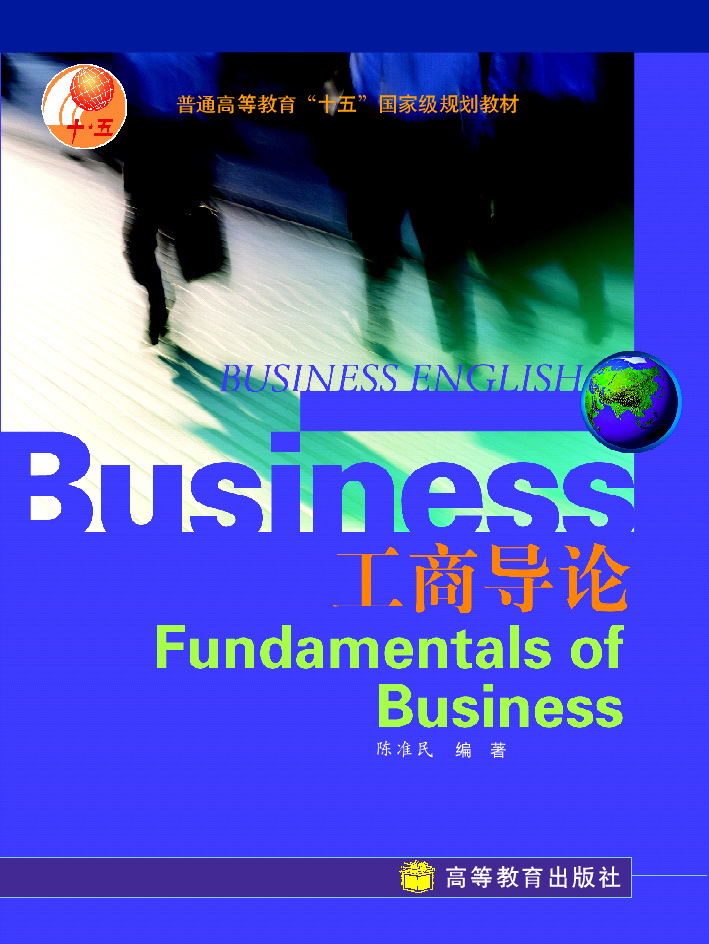投资分析与组合管理
作者: Frank K. Reilly
出版时间:2008-06-30
出版社:高等教育出版社
- 高等教育出版社
- 9787040161649
- 1
- 251497
- 平装
- 16开
- 2008-06-30
- 930
- 496
- 经济学
- 应用经济学
Part 1 THE INVESTMENT BACKGROUND
Chapter 1 The Investment Setting
What Is an Investment?
Investment Defined
Measures of Return and Risk
Measures of Historical Rates of Return
Computing Mean Historical Returns
Calculating Expected Rates of Return
Measuring the Risk of Expected Rates of Return
Risk Measures for Historical Returns
Determinants of Required Rates of Return
The Real Risk-Free Rate
Factors Influencing the Nominal Risk-Free
Rate (NRFR)
Risk Premium
Risk Premium and Portfolio Theory
Fundamental Risk versus Systematic Risk
Relationship between Risk and Return
Movements along the SML
Changes in the Slope of the SML
Changes in Capital Market Conditions or Expected Inflation
Chapter 2 The Asset Allocation Decision
Individual Investor Life Cycle
The Preliminaries
Life Cycle Net Worth and Investment Strategies
Life Cycle Investment Goals
The Portfolio Management Process
The Need for a Policy Statement
Understand and Articulate Realistic Investor Goals
Standards for Evaluating Portfolio Performance
Other Benefits
Input to the Policy Statement
Investment Objectives
Investment Constraints
Constructing the Policy Statement
The Importance of Asset Allocation
Real Investment Returns after Taxes and Costs
Returns and Risks of Different Asset Classes
Asset Allocation and Cultural Differences
Chapter 3 Selecting Investments in a Global Market
Global Investment Choices
Fixed-Income Investments
International Bond Investing
Equity Instruments
Special Equity Instruments: Options
Futures Contracts
Investment Companies
Real Estate
Low-Liquidity Investments
Historical Risk-Returns on Alternative Investments
Stocks, Bonds, and T-Bills
World Portfolio Performance
Chapter 4 Organization and Functioning of Securities Markets
What Is a Market?
Characteristics of a Good Market
Organization of the Securities Market
Primary Capital Markets
Government Bond Issues
Municipal Bond Issues
Corporate Bond Issues
Corporate Stock Issues
Private Placements
Secondary Financial Markets
Why Secondary Markets Are Important
Secondary Bond Markets
Financial Futures
Secondary Equity Markets
Regional Exchanges and the Over-the-Counter Market
Regional Securities Exchanges
Over-the-Counter (OTC) Market
Third Market
Fourth Market
Changes in the Securities Markets
Evidence and Effect of Institutionalization
Negotiated Commission Rates
The Impact of Block Trades
Institutions and Stock Price Volatility
National Market System (NMS)
New Trading Systems
Global Market Changes
Future Developments
Part 2 DEVELOPMENTS IN INVESTMENT THEORY
Chapter 5 Efficient Capital Markets
Why Should Capital Markets Be Efficient?
Alternative Efficient Market Hypotheses
Weak-Form Efficient Market Hypothesis
Semistrong-Form Efficient Market Hypothesis
Strong-Form Efficient Market Hypothesis
Tests and Results of Efficient Market Hypotheses
Weak-Form Hypothesis: Tests and Results
Semistrong-Form Hypothesis: Tests and Results
Strong-Form Hypothesis: Tests and Results
Behavioral finance
Explaining Biases
Implications of Efficient Capital Markets
Efficient Markets and Technical Analysis
Efficient Markets and Fundamental Analysis
Chapter 6 An Introduction to Portfolio Management
Some Background Assumptions
Risk Aversion
Definition of Risk
Markowitz Portfolio Theory
Alternative Measures of Risk
Expected Rates of Return
variance (Standard Deviation) of Returns for an Individual Investment
Variance (Standard Deviation) of Returns for a Portfolio
Standard Deviation of a Portfolio
A Three-Asset Portfolio
Estimation Issues
The Efficient Frontier
The Efficient Frontier and Investor Utility
Chapter 7 An introduction to Asset Pricing Models
Capital Market Theory: An Overview
Background for Capital Market Theory
Risk-Free Asset
The Market Portfolio
The Capital Asset Pricing Model: Expected Return and Risk
The Security Market Line (SML)
Relaxing the Assumptions
Differential Borrowing and Lending Rates
Zero-Beta Model
Transaction Costs
Heterogeneous Expectations and Planning Periods Taxes
Empirical Tests of the CAPM
Stability of Beta
Relationship between Systematic Risk and Return
Effect of Skewness on the Relationship
Effect of Size, P/E, and Leverage
Effect of Book-to-Market Value:
The Fa ma-French Study
Summary of CAPM Risk-Return Empirical Results
The Market Portfolio: Theory versus Practice What Is Next?
Chapter 8 Multifactor Models of Risk and Return
Arbitrage Pricing Theory
Security Valuation with the APT: An Example
Empirical Tests of the APT
Multifactor Models and Risk Estimation
Multifactor Models in Practice
Part 3 VALUATION PRINCIPLES AND PRACTICES
Chapter 9 Analysis of Financial Statements
Major Financial Statements
Generally Accepted Accounting Principles
Balance Sheet
Income Statement
Statement of Cash Flows
Purpose of Financial Statement Analysis
Analysis of Financial Ratios
Importance of Relative Financial Ratios
Computation of Financial Ratios
Common-Size Statements
Evaluating Internal Liquidity
Internal Liquidity Ratios
Evaluating Operating Performance
Operating Efficiency Ratios
Operating Profitability Ratios
Risk Analysis
Business Risk
Financial Risk
Proportion of Debt (Balance Sheet) Ratios
Earnings Flow Ratios
Cash Flow Ratios
External Liquidity Risk
Analysis of Growth Potential
Importance of Growth Potential
Determinants of Growth
Comparative Analysis of Ratios
Internal Liquidity
Operating Performance
Risk Analysis
Growth Analysis
The Value of Financial Statement Analysis Specific Uses of Financial Ratios
Stock valuation Models
Estimating Systematic Risk
Estimating the Credit Ratings on Bonds
Predicting Insolvency (Bankruptcy)
limitations of Financial Ratios
Chapter 10 An Introduction to Security Valuation
An Overview of the Valuation Process
Why a Three-Step Valuation Process?
General Economic Influences
Industry Influences
Company Analysis
Does the Three-Step Process Work?
Theory of Valuation
Stream of Expected Returns (Cash Flows)
Required Rate of Return
Investment Decision Process: A Comparison of Estimated Values and Market Prices
valuation of Alternative Investments
Valuation of Bonds
Valuation of Preferred Stock
Approaches to the Valuation of Common Stock
Why and When to Use the Discounted Cash Flow
Valuation Approach
Why and When to Use the Relative Valuation
Techniques
Discounted Cash Flow Valuation Techniques
Valuation with Temporary Supernormal Growth
Present Value of Operating Free Cash Flows
Present Value of Free Cash Flows to Equity
Relative Valuation Techniques
Earnings Multiplier Model
The Price/Cash Flow Ratio
The Price/Book Value Ratio
The Price/Sales Ratio
Implementing the Relative valuation Technique
Estimating the Inputs: The Required Rate of Return and the Expected Growth Rate of Valuation Variables
Required Rate of Return (k)
Estimating the Required Return for Foreign
Securities
Expected Growth Rates
Chapter 11 Macroeconomic and Market Analysis
Economic Activity and Security Markets Cyclical indicator Approach to Forecasting the Economy
Cyclical Indicator Categories
Analytical Measures of Performance
Limitations of the Cyclical Indicator Approach
Other Leading Indicator Series
Monetary Variables, the Economy,and Stock Prices
Money Supply and the Economy
Financial Conditions Index
Money Supply and Stock Prices
Other Economic Variables and Stock Prices
Inflation, Interest Rates, and Security Prices
Summary of Macroeconomic Analysis
Part 4 ANALYSIS AND MANAGEMENT OF COMMON STOCKS
Chapter 12 Stock Market Analysis
Applying the DDM Valuation Model to the Market
Market Valuation Using the Reduced Form DDM
Estimating the Growth Rate of Dividends (g)
Market Valuation Using the Free Cash Flow to Equity (FCFE) Model
Valuation Using the Relative Valuation Approach
Two-Part Valuation Procedure
Importance of Both Components of Value
Estimating Expected Earnings per Share
Estimating Gross Domestic Product
Estimating Sales per Share for a Market Series
Alternative Estimates of Corporate Net Profits
Estimating Aggregate Operating Profit Margin
Estimating Depreciation Expense
Estimating Interest Expense
Estimating the Tax Rate
Calculating Earnings per Share: An Example
Estimating the Earnings Multiplier for a Stock Market Series
Determinants of the Earnings Multiplier
Estimating the Required Rate of Retum (k)
Estimating the Growth Rate of Dividends (g)
Estimating the Dividend-Payout Ratio (D1/E1)
Calculating the Expected Rate of Return on Common Stocks
Other Relative Valuation Ratios
Chapter 13 Industry Analysis
Why Do Industry Analysis?
Cross-Sectional Industry Performance
Industry Performance over Time
Performance of the Companies
within an Industry
Differences in Industry Risk
Summary of Research on Industry Analysis
Industry Analysis Process
The Business Cycle and Industry Sectors
Inflation
Interest Rates
International Economics
Consumer Sentiment
Structural Economic Changes and Alternative Industries
Demographics
Lifestyles
Technology
Politics and Regulations
Evaluating the Industry Life Cycle Analysis of Industry Competition
Competition and Expected Industry Retums
Estimating Industry Rates of Return
Valuation Using the Reduced Form DDM
Industry Analysis Using the Relative Valuation Approach
The Earnings Multiple Technique
Other Relative valuation Ratios
Global Industry Analysis
Chapter 14 Company Analysis and Stock Valuation
Company Analysis versus the Valuation of Stock
Growth Companies and Growth Stocks
Defensive Companies and Stocks
Cyclical Companies and Stocks
Speculative Companies and Stocks
Value versus Growth Investing
Economic, Industry, and Structural Links to Company Analysis
Economic and Industry Influences
Structural Influences
Company Analysis
Firm Competitive Strategies
Focusing a Strategy
SWOT Analysis
Some Lessons from Lynch
Tenets of Warren Buffett
Estimating Intrinsic Value
Analysis of Growth Companies
Growth Company Defined
Actual Returns above Required Returns
Growth Companies and Growth Stocks
Growth Companies and the Dividend
Discount Model
Alternative Growth Models
No-Growth Firm
Long-Run Growth Models
The Real World
Measures of Value Added
Economic Value Added (EVA)
Market Value Added (MVA)
Relationships between EVA and MVA
The Franchise Factor
Growth Duration Model
Influences on Analysts
Efficient Markets
Paralysis of Analysis
Analyst Conflicts of Interest
Global Company and Stock Analysis
Availability of Data
Differential Accounting Conventions
Currency Differences (Exchange Rate Risk)
Political (Country) Risk
Transaction Costs
Valuation Differences
Summary
Chapter 15 Technical Analysis
Underlying Assumptions of Technical Analysis
Advantages of Technical Analysis
Challenges to Technical Analysis
Challenges to Technical Analysis Assumptions
Challenges to Technical Trading Rules
Technical Trading Rules and Indicators
Contrary-Opinion Rules
Follow the Smart Money
Other Market Environment Indicators
Stock Price and volume Techniques
Chapter 16 Equity Portfolio Management Strategies
Passive versus Active Management An Overview of Passive Equity Portfolio Management Strategies
Index Portfolio Construction Techniques
Tracking Error and Index Portfolio Construction
Methods of Index Portfolio Investing
An Overview of Active Equity Portfolio Management Strategies
Fundamental Strategies
Technical Strategies
Anomalies and Attributes
Miscellaneous Issues
Value versus Growth Investing:
A Closer Look
An Overview of Style Analysis
Asset Allocation Strategies
Integrated Asset Allocation
Strategic Asset Allocation
Tactical Asset Allocation
Insured Asset Allocation
Selecting an Active Allocation Method
Using Futures and Options in Equity
Portfolio Management: An Overview
Modifying Portfolio Risk and Return:
An Introduction
Using Derivatives in Passive Equity Portfolio Management
Using Derivatives in Active Equity Portfolio Management
Part 5 ANALYSIS AND MANAGEMENT OF BONDS
Chapter 17 Bond Fundamentals
Basic Features of a Bond
Bond Characteristics
Rates of Return on Bonds
The Global Bond Market Structure
Participating Issuers
Participating Investors
Bond Ratings
Alternative Bond Issues
Domestic Government Bonds
Government Agency Issues
Municipal Bonds
Corporate Bonds
International Bonds
Chapter 18 The Analysis and Valuation of Bonds
The Fundamentals of Bond Valuation
The Present Value Model
The Yield Model
Computing Bond Yields
Nominal Yield
Current Yield
Promised Yield to Maturity
Promised Yield to Call
Realized (Horizon) Yield
Calculating Future Bond Prices
Price and Yield Determination on Noninterest Dates
Yield Adjustments for Tax-Exempt Bonds
Bond Yield Books
Bond Valuation Using Spot Rates
What Determines Interest Rates?
Forecasting Interest Rates
Fundamental Determinants of Interest Rates
Term Structure of Interest Rates
Calculating Forward Rates from the Spot Rate Curve Term Structure Theories
Expectations Hypothesis
Liquidity Preference Hypothesis
Segmented Market Hypothesis
Trading Implications of the Term Structure
Yield Spreads
What Determines the Price Volatility for Bonds?
Trading Strategies
Duration Measures
Modified Duration and Bond Price Volatility
Bond Convexity
Limitations of Macaulay and Modified Duration
Yield Spreads with Embedded Options
Static Yield Spreads
Chapter 19 Bond Portfolio Management Strategies
Alternative Bond Portfolio Strategies
Passive Management Strategies
Active Management Strategies
A Global Fixed-Income Investment Strategy
Core-Plus Bond Portfolio Management
Matched-Funding Techniques
Implications of Capital Market Theory and the EMH on Bond Portfolio Management
Bonds and Total Portfolio Theory
Bonds and Capital Market Theory
Bond Price Behavior in a CAPM Framework
Bond Market Efficiency
Part 6 SPECIFICATION AND EVALUATION OF ASSET MANAGEMENT
Chapter 20 Professional Asset Management
The Asset Management Industry:Structure and Evolution
Private Management and Advisory Firms
Investment Strategy at a Private Money
Management Firm
Management of Investment Companies
Valuing Investment Company Shares
Closed-End versus Open-End Investment Companies
Closed-End Investment Companies
Open-End Investment Companies
Fund Management Fees
Types of Investment Companies Based on Portfolio Makeup
Common Stock Funds
Hybrid Funds
Bond Funds
Money Market Funds
Breakdown by Fund Characteristics
Global Investment Companies
Ethics and Regulation in the Professional
Asset Management Industry
Performance of Investment Companies
Analysis of Overall Performance
Investment Style and the Classification of Mutual Funds
Investment Style and Performance Persistence
What Performance Studies Mean to You
Chapter 21 Evaluation of Portfolio Performance
What Is Required of a Portfolio Manager?
Composite Portfolio Performance Meas Ires
Portfolio Evaluation before 1960
Peer Group Comparisons
Treynor Portfolio Performance Measure
Sharpe Portfolio Performance Measure
Jensen Portfolio Performance Measure
The Information Ratio Performance Measure
Application of Portfolio Performance Measures
Components of Investment Performance
Performance Attribution Analysis
Asset Class Attribution Analysis; An Example
Measuring Market Timing Skills
Factors That Affect Use of Performance Measures
A Demonstration of the Global Benchmark Problem
Implications of the Benchmark Problems
Required Characteristics of Benchmarks
Evaluation of Bond Portfolio Performance
A Bond Market Line
Decomposing Portfolio Returns
Analyzing Sources of Return
Consistency of Performance
Reporting Investment Performance
Time-Weighted and Dollar-Weighted Returns









